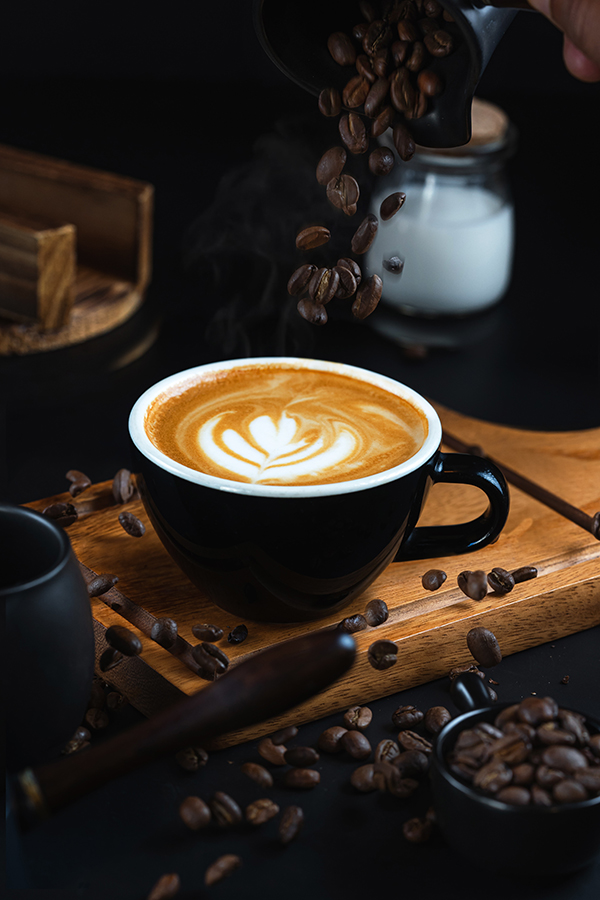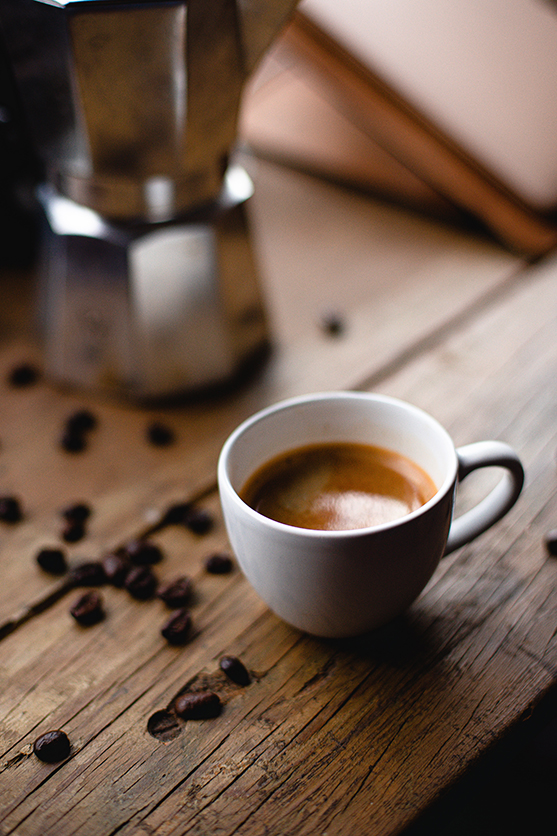The art of brewing coffee is a daily ritual for millions, but have you ever considered the science behind your morning cup?
Understanding the chemistry of coffee brewing can enhance your appreciation for this beloved beverage and even improve your brewing skills.

Read on to learn more about the science behind coffee brewing!
The Chemistry of Coffee Beans
Coffee beans are packed with various chemical compounds that contribute to both the flavor and the aroma of your coffee. These include caffeine, oils, acids, and sugars.
However, the true magic happens during the roasting process, where a chemical reaction known as the Maillard Reaction occurs. This reaction, which occurs when the beans are heated, is responsible for transforming the simple sugars and amino acids in the beans into hundreds of complex compounds that give coffee its distinctive flavor.
The Extraction Process
When you brew coffee, several chemical reactions take place. The main reactions include:
- Extraction: This is the process where hot water acts as a solvent, dissolving the soluble compounds in the coffee grounds. These compounds include various acids, oils, and other flavor compounds.
- Hydrolysis: Some of the complex compounds in coffee are broken down into simpler compounds through a reaction with water, a process known as hydrolysis.
- Emulsion: The oils in coffee form an emulsion when brewed, contributing to the body and mouthfeel of the coffee.
These reactions combine to extract both the flavors and the aromas from the coffee grounds, resulting in a complex and flavorful beverage.
The extraction process is where the flavors and aromas locked inside the coffee beans are transferred to the water. Several factors influence this process:
- Grind size: Where the size of the coffee grounds directly affects the extraction rate. Finer grounds have a larger surface area, allowing for quicker extraction. However, the coffee can become over-extracted and bitter if the grounds are too fine. Yet, if the coffee grounds are too coarse, the coffee may be under-extracted and weak.
- Water: Where the quality and temperature of the water used in brewing can significantly impact the extraction process. Ideally, the water should be clean and free of any strong odors that could affect the taste of the coffee. The temperature of the water does also play a crucial role, which leads us to our next point.
The Role of Temperature in Coffee Brewing
Temperature is a critical factor in the brewing process. It affects the rate at which flavors are extracted from the coffee grounds. The perfect water temperature for coffee brewing is between 195 to 205 degrees Fahrenheit or 90 to 96 degrees Celsius. Too hot water can over-extract the coffee, leading to a bitter taste. Conversely, too cool water can under-extract the coffee, resulting in a weak and underdeveloped flavor.
The Effect of Brew Time
The brew time also influences the flavor of your coffee. The time of which the water is in contact with the coffee grounds determines how much of the flavors are extracted. For example, in a method like the French press, the coffee grounds are in contact with the water for several minutes, leading to a full-bodied and robust flavor.
In contrast, in an espresso shot, the water is forced through the coffee grounds under very high pressure for a very short time, resulting in a concentrated and intense flavor.
Finding the right balance in brew time is essential for achieving the perfect cup of coffee.

Advanced Concepts in Coffee Chemistry
Delving deeper into the chemistry of coffee, we encounter the role of acids and the impact of roasting on coffee chemistry.
Coffee contains several types of acids, including citric, malic, and chlorogenic acids. These acids do contribute to the overall flavor profile of coffee, providing the characteristic brightness and complexity that coffee lovers enjoy.
The roasting process also significantly impacts the chemistry of coffee. During roasting, the heat causes chemical changes within the coffee beans, transforming the green beans into the brown, aromatic beans we are familiar with. This transformation results from various chemical reactions, including caramelization and the Maillard reaction, which create coffee’s complex flavors and aromas.
Understanding the role of acids and the impact of roasting can help coffee enthusiasts and professionals alike appreciate coffee’s intricate chemistry better.
Final Words
Understanding the chemistry of coffee brewing is a fascinating journey that can enhance your appreciation for this beloved beverage. From the chemical compounds in coffee beans to the extraction process, the role of temperature, and the effect of brew time, each aspect plays a crucial role in creating the perfect cup of coffee.
If you are either a coffee enthusiast or a coffee professional, gaining a deeper understanding of these concepts can help you brew better coffee and appreciate the complex chemistry that goes into each cup.
FAQs
Is brewing a coffee chemical or physical change?
Brewing coffee involves both physical and chemical changes. The grinding of coffee beans is a physical change, as it consists of changing the beans’ size and shape without altering their chemical composition.
The brewing process, on the other hand, involves chemical changes. When hot water gets into contact with the coffee grounds, it acts as a solvent, dissolving the soluble compounds in the coffee. This extraction process involves chemical reactions, resulting in a new substance – brewed coffee.
What are the five variables of coffee?
The four fundamentals of brewing coffee are:
- Coffee-to-water ratio: This is the amount of coffee used relative to the amount of water. The ideal ratio can vary depending on personal taste, but a common starting point is 1 gram of coffee to 15-18 grams of water.
- Grind size: Where the size of the coffee grounds affects the extraction rate. Finer grounds have a larger surface area and extract more quickly than coarser grounds.
- Water temperature: When the temperature of your water can significantly impact the extraction process. The ideal water temperature for brewing coffee lies from 195 to 205 degrees Fahrenheit (90 to 96 degrees Celsius).
- Brew time: This is the time the water is in contact with the coffee grounds. The brew time will vary depending on the brewing method and the desired strength of the coffee.
- Agitation: This refers to the stirring or agitation of the coffee grounds during brewing. Agitation can help to ensure that the water comes into contact with all the grounds, leading to a more even extraction.
What are the three T’s of coffee brewing?
The three T’s of coffee brewing are:
- Time: This refers to the brew time or how long your water is in contact with the coffee grounds. The brew time can affect the flavor of the coffee, with longer brew times typically resulting in stronger, more extracted flavors.
- Temperature: This refers to the water temperature used in the brewing process. The water temperature can affect the extraction rate, with higher temperatures leading to faster extraction.
- Turbulence: This refers to the agitation of the coffee grounds during the brewing process. Agitation can help to ensure that water comes into contact with all the coffee grounds, leading to a more even extraction.

Written by Robbie – Coffee Writer and Researcher at MyCoffeeBeanz.com
Robbie has over 15 years of extensive experience working in the coffee industry in marketing. As a native New Yorker he loves the hustle and bustle of a big city and enjoys nothing more than breaking up his busy day with trips to the nearest coffee shop for a double espresso. Find out more about Robbie
